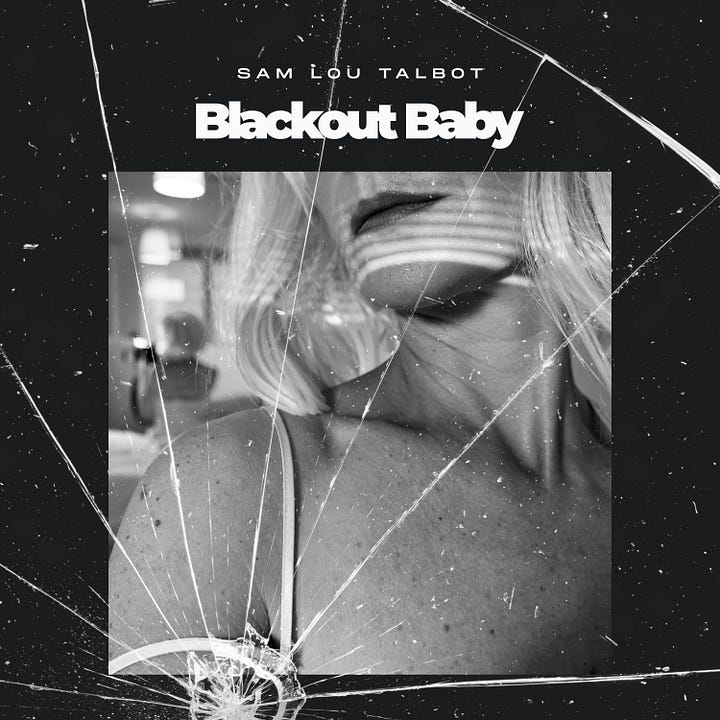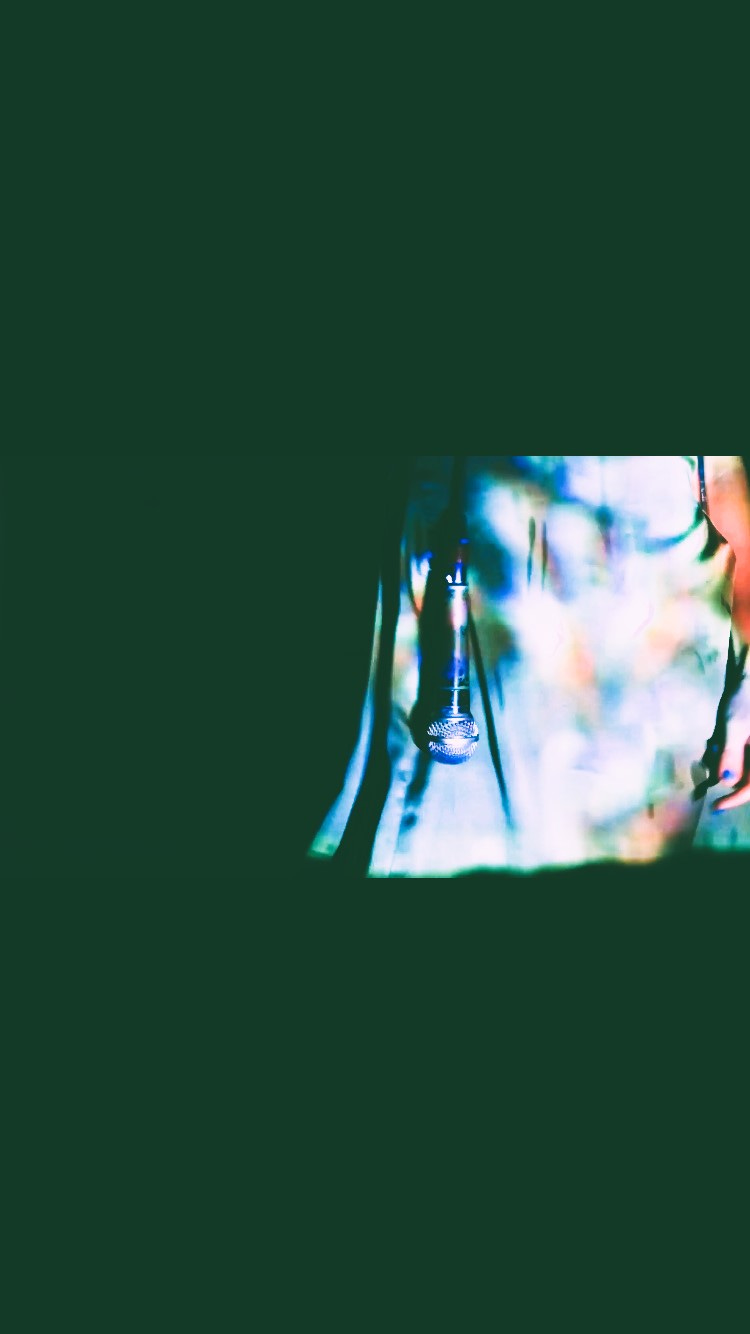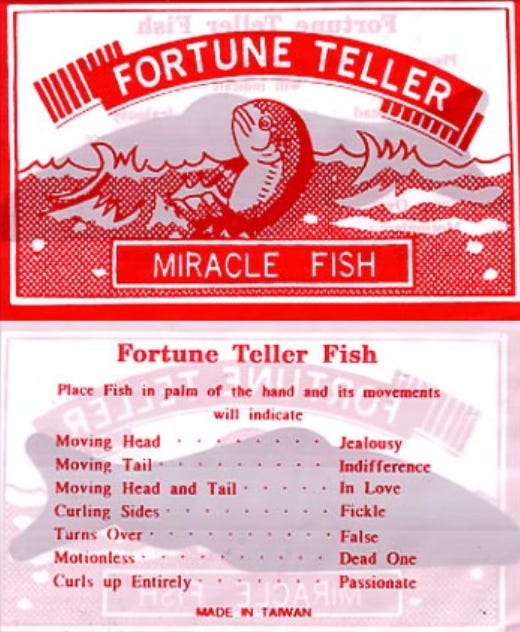

The late Sinéad O’Connor, in her autobiography, Rememberings (2021, pp.115-117) raises the issue of proximity and microphone technique, thus:
I’ve made my voice into its own master fader. … You can move around a mike within a certain triangular energy field. The size of each field depends on the type of mike. Some require you to be “on top” of them, as we call it, because the space in which they pick up your voice is so tiny. Others have a larger field and you can throw your head about in order to achieve what you want without the lights going past green. You let your body use the field the same way an actor uses the stage. How far its too far, and how close is too close? You can feel it with your face.1
I’m about to drop my new EP - Blackout Baby.
We no longer release music but drop it, feigning spontaneity when the reality is often marketing giants at the helm.
I finally got around to listening to the masters. They are beautiful, simply put. Delicate, and raw material.
It’s always a ritual. Headphones on and cast, expectantly, on the mink carpet with all that yearning I had poured into the mic in the booth in those sessions coming right on back at me like I deserved it, the 22 minutes odd continuous WAV file bathing me in some kind of an eternal polyphony.
As my producer friend, Max, puts it in his notes on an LA/Nashville/Glasgow co-write we did back in the heights of the audio-app Clubhouse, during Covid-19, when we were tethered to the app and its sea of itinerant avatars: “you never know what the mic will pull out of a person”.
It’s the magic of there not being anything there, then there being something, and it’s never not mysterious.
Such pulling is intimately tied to the ‘proximity effect’, production parlance which describes the increase of the lower frequencies or booms that dominate when the distance between mouth and directional cardioid mick is significantly reduced. How close can one get? And to whom?
With a quality condenser mick such as the Neumann U87 which I used to record both Space Junk and Blackout Baby the recommended six-inches can be pushed to around three-inches.
We can also ‘eat the mic’, which really complicates things.
I wanted to relay the phenomenological and ontological experience of recording, being cocooned in the booth with the monitoring headphones on, hearing one’s voice coming back at one, amplified, and reverberating, because it feels like a type direct contact (Merleau-Ponty, 1987)2 with the world, and self.
“I love the raw aesthetic,” said Nick, the engineer on first hearing the mixdowns.
“Reminds me of Cat Power’s debut Dear Sir (1995)3. And have you heard What Would the Community Think (1996)?4 Take a listen, I think you’d like it.”
The world is in such a mess. I am doing my best not to open The Guardian on my phone. It might be preferable to live in a Vermeer painting and exist by candlelight, chores and all. I have no problem being a painter’s muse. It happened once.
Losing the ends of words—complete in my flawed diction—caressing hidden corners, and retrieving soul. I sing, on the last track, “Lunatic”, “You call me a lunatic / And I like it, I like it.”
The reviewer recommends that I …don’t hide behind the words, she requires more signposting and orientation.
Blackout Baby was ‘lights out’ on the project, a neat negation. This follows releasing a three-hour five-piece 34-track experimental concept album with the word ‘junk’ in the title, without an audience to speak of nor a campaign, which is ill-advised when no one has heard of you (Damian Keyes, 2023).5 Still, the songs aren’t going anywhere, and I own my masters. Songs don’t abandon us. They are always there, and always in the wings.
This has been a messy, organic process. I am quoted in the APR review commentary. I need to distil this. But mess rarely gets admitted in write-ups, doctoral or otherwise when perhaps it should.
Circa 2003, I had a cleaning job at the art school. My boyfriend got me the job, as he knew the boss, Sandy, a merciless and stony-faced chain smoker. Died of it not long after. There was another cleaner on the team, called Alan, who resembled The Penguin. He had greasy black hair, combed to one side and was permanently flushed, it could have been rosacea. On occasion, I’d take a break from my figure of eights, and watch him through the glass.
“He’s cleaning with the light off, again,” I’d go and tell my boyfriend, who was tipping up the bin looking for dregs whilst trying to ditch it.
One time, I found myself alone with Alan so I asked him why he kept the lights off. He said it made no difference either way, which I kind of got. (Besides, my own cleaning left much to be desired.)
Basically, I’d clock the big pile of mess right in front of me. But rather than get to the big pile of mess right away, I’d deal with the other bits first. It was some kind of twisted strategy that meant that all there was left to do in my mind was deal with the big pile of mess still right in front of me rather than risk being given more to do. (Come to think of it, it could have been early warning signs of ‘strategic incompetence’ kicking in.)
There was an unfortunate downside to my untenable rationale, though, in that Sandy would pop her head around the door, on cruising the corridors and, being hit by the big pile of mess still right in front of me, get shirty.
Whereas with Alan, well, he’d go straight to the big pile of mess as it was all he could see, and she’d be happy.
I raise this now as I suspect I’m probably doing something similar here—skipping around the margins, opening back doors, and side cupboards. Hiding out in stairwells, and stealing time, my line of flight being caught up in a tangent of swallows over the lake, heading south.
When I was a kid, we used to go on Sunday afternoon trips to garden centres. This was a regular event, and it is one of my happier memories of the family functioning. To this day, I love wandering around garden centres with the scent of foliage and calmness. Dad would pull up in whatever car he’d hired that month, ranging from white vans to Mercedes, and we’d all leap out the back and explore.
Mum is a gardener and all our gardens in the various houses we lived in were always well-kept, mowed, and manicured.
One time, a neighbour, two doors down, stole our palm tree on his way back from the pub. When Mum went around, he denied it.
Mooching around the plants, stone statues, and specimen trees, I’d mouth their Latin names without having any idea what Latin was but liking the way the italics went. I’d then get caught monitoring the tanks in the aquarium, absorbing their slowing down time powers.
Later on, at Middle School, came the Fortune Teller Miracle Fish. Not only could this mercurial property predict the future, but it could also tell if your boyfriend was kissing your best mate behind your back, or whether your best friend was truly your best mate for life, or only until next week. The best bit was that if you didn’t like the answer you got, you could always go again.
The Fortune Teller Miracle Fish is manufactured by Fortune Teller Fish (Helmenstine, 2021). Upon the mechanics, the company claim that the lover is fickle should they curl up, and various temperaments could be gauged by the way the fish moved in the hand.
I liked the fact that I often curled up entirely.
The reality, though, is that the fish is made out of sodium polyacrylate, like baby diapers, and it works because only one side of the fish is wedded to the sweat glands in your palm at any one time, stopping it from getting
attached.
I ran away on the first day of primary school. A friend who was in the same class told me this twenty years later, swearing it to be true. I don’t recall my exit route but I do have a vision of me running across the playground and nearly into the brick wall. In my mind, I was on my way home, my school uniform caught up in violent gusts.
The above photograph was taken in a field in the middle of England. I have photographed this tree in all weathers, as have many others. I would be devastated if it were ever to be cut down, or the land sold off to developers, its coupled branches invoking me to disobey the rule of thirds whenever the sky comes into the equation.
It’s gone midnight. 00:14.
01:00.
W/m on.
Quick wash.
Plunge prices.
The security lights over on the shipping yard are treading upon the swans, their necks folded in,
drifting,
always in twos. But never
together.
Whenever one drifts too far, the other
lessens the gap.
On an unrelated note, I found myself re-playing this footage of tourists6, which was also posted on social media by the group Venezia Non è Disneyland (Venice Is Not Disneyland), morbidly fascinated by the way the woman is gripping her phone, to the point that it’s stopping her getting a hold of the gondola she’s trying to get into.
O’Connor, S. 2021. Rememberings. London: Penguin.
Merleau-Ponty, M. 2012. Phenomenology of perception. Translated by D.A. Landes. New York: Routledge.
Cat Power. 1995. Dear sir. [CD]. Italy: Runt Records.
Cat Power. 1996. What the community think. [CD]. US: Matador Records.
Damian Keyes. 2023. How to get 1000 genuine fans in 30 days. [Online]. [Accessed 21 March 2023]. Available from: https://youtu.be/jVhqDERVvnU
Patrick, H. 2023. Selfie-taking tourists capsize gondola in Venice canal. The Independent. [Online]. [Accessed 10 December 2023]. Available from: https://www.independent.co.uk/tv/lifestyle/venice-tourists-selfie-boat-sinks-b2459789.html







